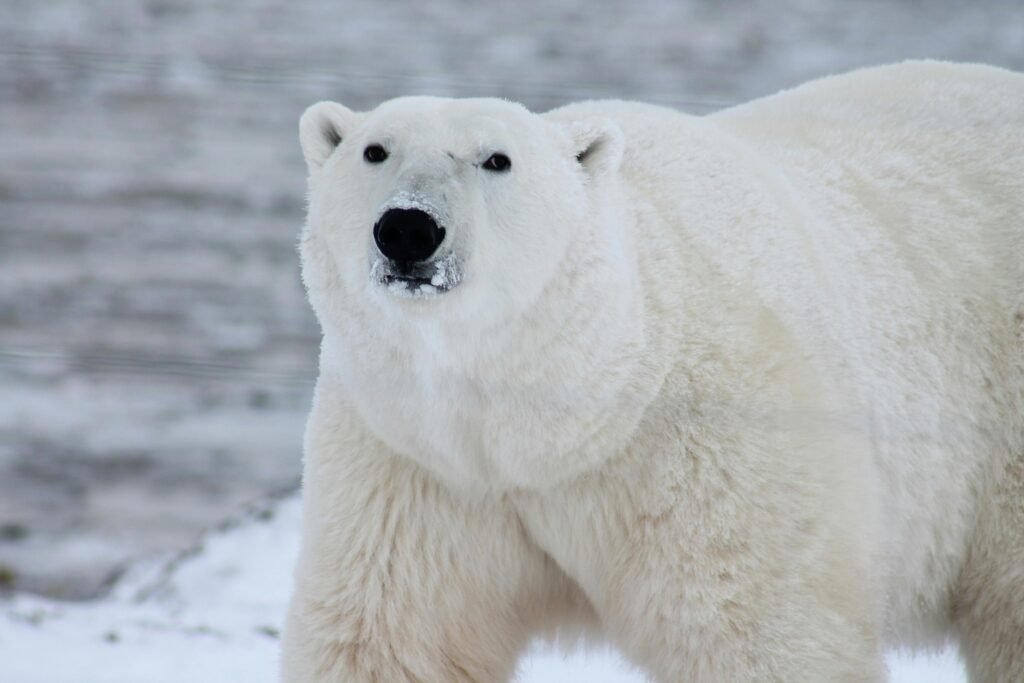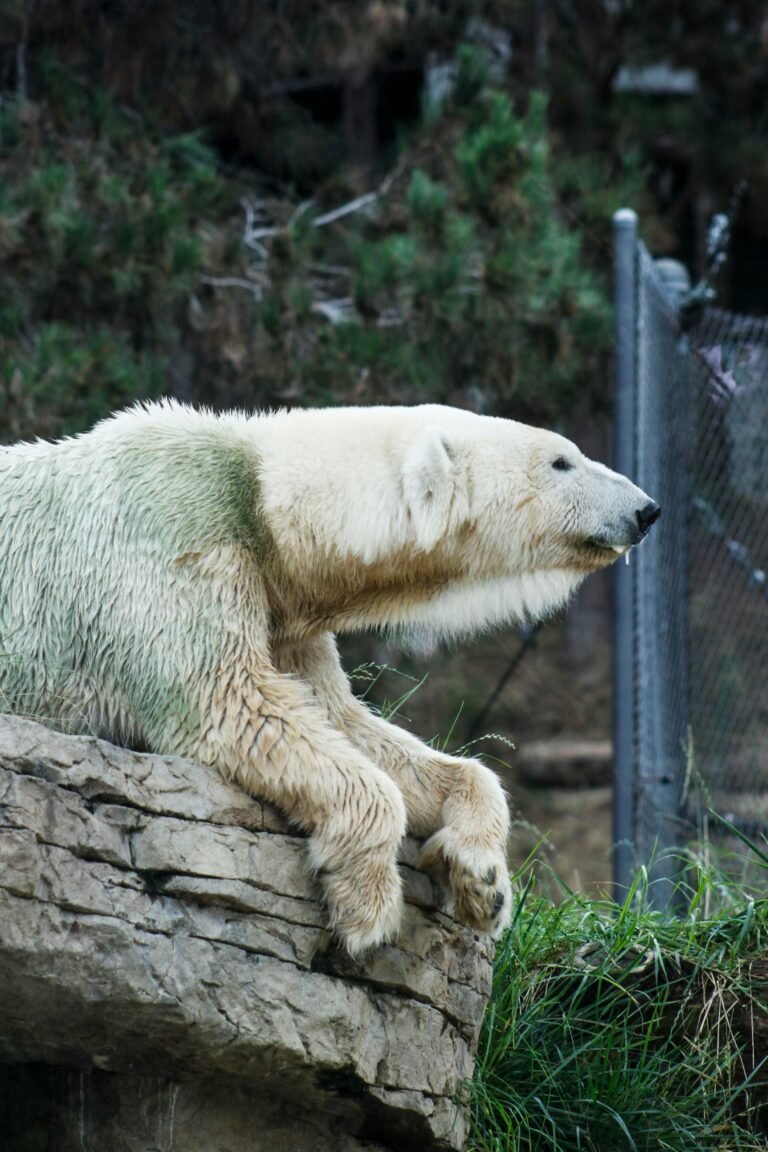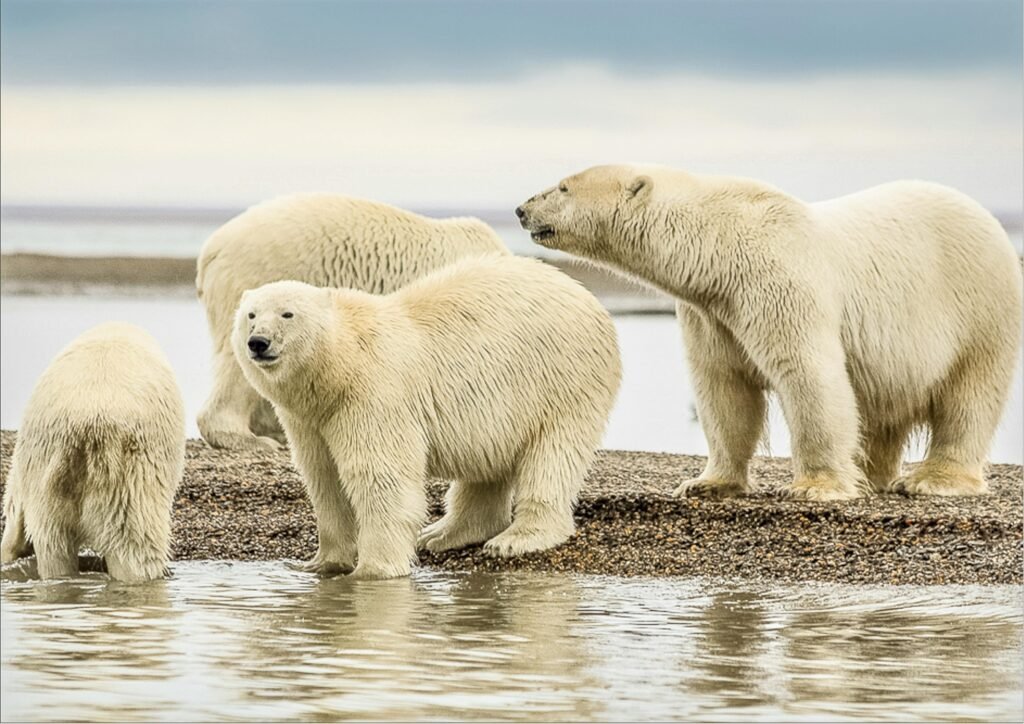
Table of Contents
Introduction
Polar bears (Ursus maritimus), the powerful apex predators of the Arctic, are known for their distinctive white fur, which characterises their iconic appearance. The topic of what makes polar bears white is more than just aesthetics; it is a fascinating biological adaptation that is inextricably tied to their survival in the harsh Arctic climate. amid this exploration, we look at the science behind polar bears’ white fur, specifically the unique qualities that contribute to their camouflage, insulation, and overall durability amid the ice expanses of the polar regions.

1. The Evolutionary Advantage What makes Polar Bears White in Colour
The evolutionary odyssey that led to the creation of white fur in polar bears demonstrates the power of natural selection. Over thousands of years, these majestic species have adapted to the Arctic’s cold surroundings, which are predominantly white and blue. The appearance of white fur gave polar bears a considerable edge when foraging, navigating their habitat, and evading predators.

2. Camouflage in a World of Ice and Snow
The evolutionary odyssey that led to the creation of white fur in polar bears demonstrates the power of natural selection. Over thousands of years, these majestic species have adapted to the Arctic’s cold surroundings, which are predominantly white and blue. The appearance of white fur gave polar bears a considerable edge when foraging, navigating their habitat, and evading predators.

3. The Dual-layered Fur Structure
Polar bears’ characteristic white fur is a complicated structure consisting of two layers: guard hairs and undercoat. The outer layer, known as guard hairs, is white and provides insulation while repelling water. These guard hairs are translucent and hollow, allowing sunlight to reach the black skin underneath. The absorbed heat contributes to the bear’s total warmth.
4. Underlying Black Skin
Polar bears have black skin behind their supposedly white surface. This characteristic is important for thermoregulation. The black colouring of the skin absorbs sunlight, turning it into heat and helping the bear stay warm in frigid temperatures. The combination of white fur and underlying black skin offers an effective thermal balance for survival in the Arctic’s harsh circumstances.

5. Adaptation to Seasonal Changes
The Arctic undergoes dramatic seasonal variations, with periods of continuous brightness during the summer and extended darkness in the winter. Polar bears’ white fur is not only useful for camouflage, but it also helps them adapt to light fluctuations. During the extended Arctic summer sunshine, the white fur reflects sunlight, whereas during the arctic night, it helps to keep the body warm by absorbing what little light is available.
6. A Closer Look at Guard Hairs
The guard hairs, the lengthier outer covering of polar bear fur, are essential for insulation and buoyancy. Aside from providing concealment, these guard hairs trap a layer of air close to the bear’s body, acting as an efficient insulator against the cold Arctic temperatures. The buoyancy of the fur helps polar bears swim, a talent they use to navigate cold waters in search of prey.
7. Seasonal Moult and Fur Maintenance
While polar bears are known for their white fur, it goes through a periodic moult. Polar bears may appear yellowish during the moulting season, which normally occurs in late spring or early summer as a result of sunshine oxidising their fur. This natural process is only temporary, and the fur will return to its original white colour when the new guard hairs come in. The seasonal moult is an important part of fur maintenance, as it ensures the efficacy of insulation and concealment.

8. Genetic Adaptations to Changing Environments
As the Arctic experiences fast environmental changes as a result of climate change, polar bears’ adaptation capacities are tested. While their white fur remains beneficial in many ways, the decrease in sea ice presents new concerns. Some experts believe that the genetic variety of polar bear populations influences their ability to adapt to changing surroundings, emphasising the dynamic interplay between genetics and the environment.

9. The Role of Melanin in Fur Coloration
The presence of pigments influences the hue of fur, with melanin playing an important role. Polar bears’ guard hairs lack melanin, which adds to their white appearance. Melanin is the dark pigment found in many animals’ fur, feathers, and skin, and it protects them from ultraviolet (UV) radiation. Polar bears’ evolutionary trade-off favours the benefits of white fur for stealth and insulation over the UV protection provided by melanin.
10. Conservation Implications
Understanding the complicated mechanics underlying polar bears’ white fur is more than just an exercise in scientific curiosity; it has far-reaching conservation implications. As climate change accelerates and the Arctic undergoes enormous alterations, polar bears face problems that go beyond genetic adaptation. Conservation efforts must address larger environmental challenges affecting their habitats, such as sea ice loss, prey availability, and the effects of human activity.

Conclusion
The ethereal beauty of polar bears’ white fur goes beyond the skin; it is the result of evolutionary fine-tuning that has provided these Arctic giants with the tools they need to survive in one of the toughest environments on the planet. The camouflage, insulation, and adaption inherent in their fur represent a complex balance between biology and ecology. As we wonder at the mystery of what makes polar bears white, we must equally recognise the importance of protecting their freezing habitats and reducing the effects of climate change to preserve the survival of these incredible creatures in the Arctic wilderness.

1 thought on “The Arctic Mirage: 10 Aspects Found in decoding the Mystery of Why Polar Bears are White”